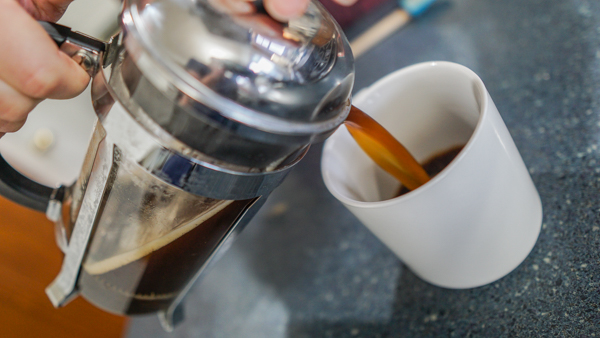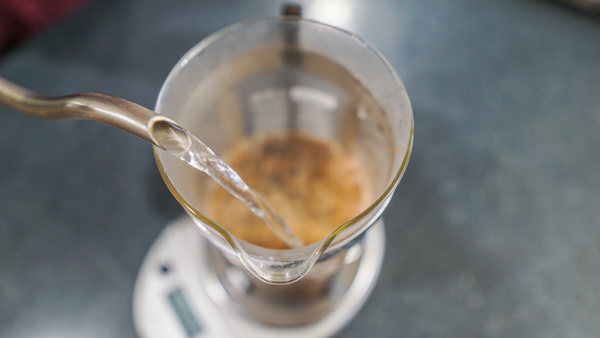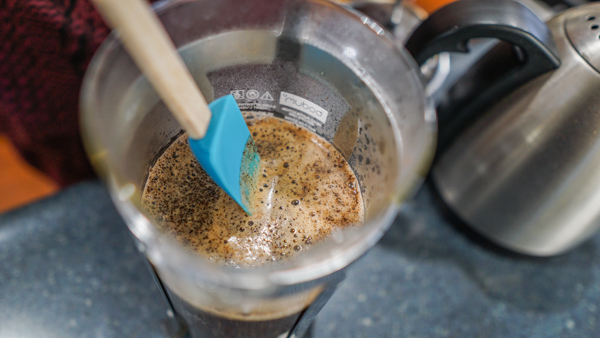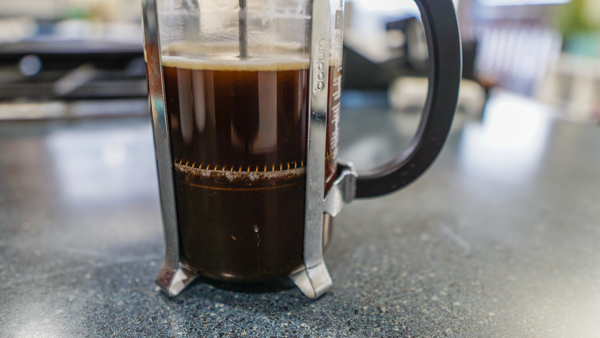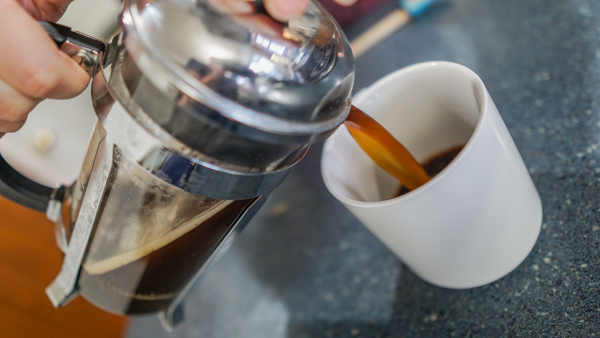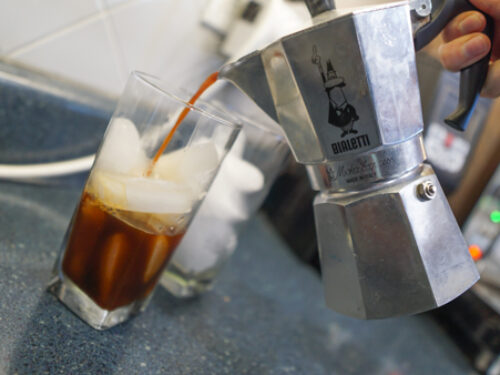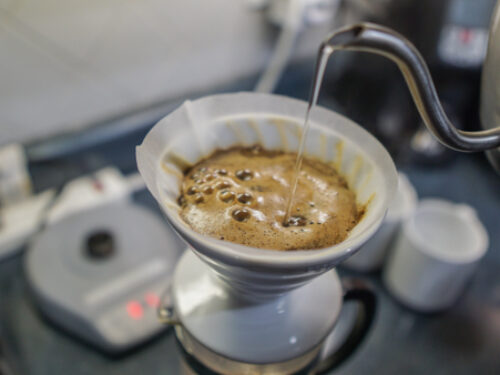Disclaimers: Our site uses demographic data, email opt-ins, display advertising, and affiliate links. Please check out our Terms and Conditions for more information.
If there is any coffee brewing method that is almost a set-it-and-forget-it approach, it would most certainly be the French Press. On the surface, this one is an easy process as you add water, coffee grounds, and wait for a sufficient period of time before pushing the plunger down and pouring out a cup.
But with everything, minor changes here with your grind settings and brewing temperature can go a long way to a flavorful cup.
In this guide, I wanted to share my process for making the best French Press coffee at home, including what you'll need to make one and subtle brewing details that are often overlooked.
The Equipment You'll Need for a French Press
To make the best French Press at home, you'll need the following equipment.
- French Press
- Burr Grinder
- Gooseneck Water Kettle
- A kitchen scale
- A spoon
- A timer (built-in to the kettle above or on your phone)
- A coffee cup
What French Press Coffee Ratio Works Best?
The best French Press coffee ratio we have found so far is the following (for a single serving):
- Roast: Dark / Full City
- Coffee: 20 g per serving
- Water: 300 g per serving
- Contact Time: 4 minutes
- Temperature: 198°F
- Grind: Coarse (14 of 16 on Grinder)
If making a double batch, simply double the water and coffee weight and keep the contact time the same. As French Press brewing is a constant contact/steeping process, the brewing time will be fixed independent of batch size.
The above is based on our preferred roast type for this style of coffee preparation. For lighter or darker roasts, you may need to change your temperature or grind accordingly. This is discussed more at the end of the guide.
French Press Coffee Recipe
To make the best French Press coffee at home, we recommend the following steps for a single pour (parenthesis denote adjustments for a double cup):
- Set your kettle to 198°F and hold until ready.
- Grind your coffee to a coarse setting, roughly 14 out of 16 on a multi-setting grinder.
- Rinse the inside of the French Press lid and plunger with hot water over your sink.
- Place the French Press base on your kitchen scale and tare.
- Place coffee grounds in French Press, tare, and pour in 300 g of water (600 g for double).
- Start timer on your kettle (if available) or phone.
- Stir the grounds gently to ensure the surface layer is sufficiently wet.
- Attach the lid of the French Press with the plunger raised.
- Just before the timer reaches 4 minutes, take the lid off, stir one more time, and replace the lid.
- When the timer reaches 4 minutes, slowly press down on the plunger to push coffee grounds to the bottom.
- Decant your coffee into a coffee cup (slowly to minimize fine grounds pouring into your cup)
- Enjoy your coffee!
Some French Press Coffee Theory and Science
In steps 1 and 2, we recommend a temperature of 198°F and a coarser grind to coincide with our preferred conditions for a darker roast. The longer contact time of the French Press benefits coarser grinds and lower temperatures to prevent over-extraction, especially for darker roasts. For those who would like to brew a lighter roast, you will likely want to adjust to a slightly finer grind setting (to, say, 10 out of 16) while increasing your brewing temperature a few degrees (200° to 202° depending on how light the roast is). This will allow for a bit easier extraction of desirable compounds.
In step 7, we recommend gently stirring at the top of the water level as some coffee grounds may clump at the surface and be dry. By stirring gently you can wet these grounds and improve extraction.
In steps 10 and 11, it is important to filter and decant your coffee quickly as this is a constant contact process. As long as the water is in contact with the coffee, extraction will occur. As such, it is best to have your cup(s) ready at the 4-minute mark to minimize any over-extraction possibilities.
In step 11, despite the above point, we also recommend pouring slowly into your coffee cup and may even go as far as recommending leaving a bit of liquid in the French Press when pouring. French Press coffee filters do not have the tightest filtering mesh and some fine particles will pass through into your cup of coffee. By decanting slowly and leaving a bit of residual liquid in the French Press, you'll likely minimize the number of grounds that appear in your cup when drinking- although we will be the first to admit this is simply a personal preference more than anything.
How do you prepare your French Press at home? Comment below to share any tips you have picked up along the way!

